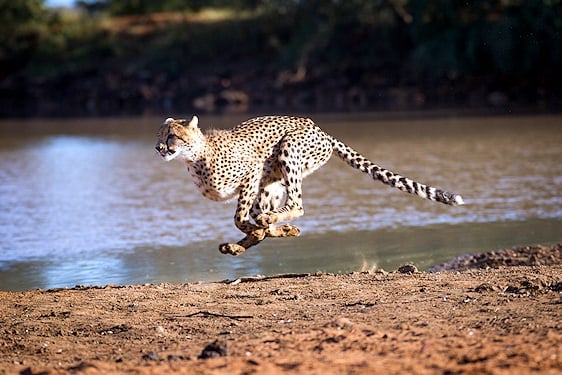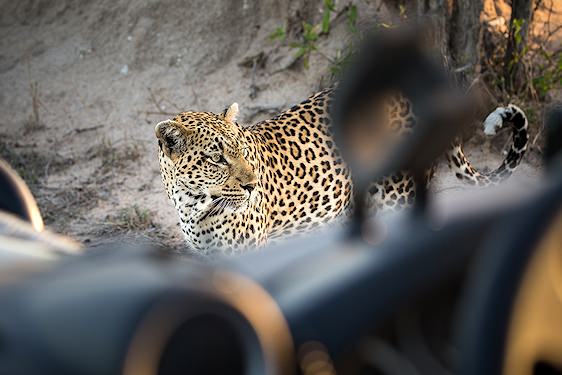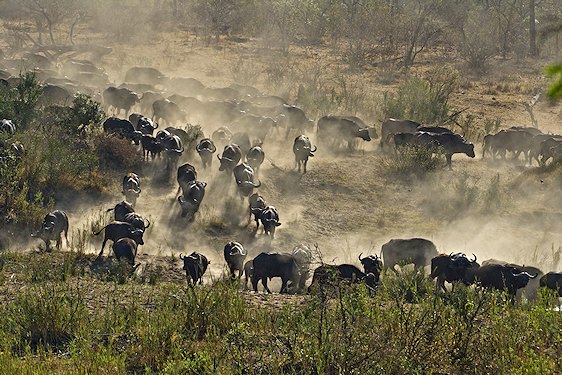- Home
- >
- African Travel
- >
- South Africa
- >
- National Parks
- >
- Kruger National Park
- >
- Mammals
- >
- Vervet Monkey
Description
Vervet monkey is a small, alert primate with pale gray fur, a black face edged by a pale fringe, and distinctive blue skin on the underside. A long tail aids balance during agile leaps between branches. Troops frequent woodland edges and riverine trees, using sharp alarm calls and rapid retreats to cover when danger appears on open ground.

Vervet monkey occurs widely across southern and eastern Africa, including much of northeastern and eastern South Africa, where proximity to water supports regular foraging and drinking. Populations are common along major rivers and in wooded savanna. Coastal and sub-tropical regions from KwaZulu-Natal north through Mozambique to Kenya hold especially strong numbers where habitat remains intact.

Status
Vervet monkey is assessed as Least Concern across much of its range. Numbers remain healthy in protected areas like Kruger and in many rural landscapes where trees and water persist. Local declines can occur with habitat loss, persecution near crops, and water scarcity, yet adaptable feeding and nesting behavior allow quick rebounds where woody cover and riparian corridors are conserved.

Habitat
Woodland, savanna, and riverine forest provide food, shade, and sleeping trees. Vervet monkey favors habitat mosaics with nearby water, shifting seasonally between fruiting trees, seed patches, and insect-rich edges. Troops readily use rural and agricultural margins, where access to crops can increase conflict. In parks, they remain close to cover, retreating to mid-canopy perches during the day’s hottest hours.

Social Organization
Troops average around 25 individuals, typically several adult male with adult female and young. Juvenile male disperse on maturity, while female usually remain, reinforcing kin bonds. Dominance hierarchies influence access to food and mates. Territorial defense includes chorus calls, chasing, and conspicuous tail flags along boundaries, especially near favored fruiting trees and water access points.
Finest Safari Areas in Africa for Encountering Vervet Monkey
We recommend the following National Parks and Private Reserves for the best chances of spotting the vervet monkey on safari game drives and bush walks.

Social Behavior
Daily routines begin with group grooming and soft contact calls before coordinated foraging. Many eyes scan for danger while others feed; tail flicks and harsh barks spread alarms rapidly. Midday brings shade rest in trees; late afternoon activity increases near water and fruiting trees. Juvenile practice leaps and mock chases that hone balance, social skills, and predator awareness.

Reproduction
Mating is seasonal in many regions. Female typically reach sexual maturity around 3.5–4 years; male from about 4.5 years. Dominant male secure more matings, though multiple partners occur. Gestation lasts several months, with births peaking in spring when food and water improve. Newborn cling to the mother’s belly; within weeks, they ride dorsally and explore nearby branches.

Anti-Predator Behavior
Ground foraging increases risk from eagle and small wild cat, while leopard, lion, and hyena also take vervet monkey. Distinct alarm calls cue troop-specific responses—scrambles to canopy for aerial threats, rapid retreats to dense cover for terrestrial danger. Sentinel individuals pause high on branches, scanning until calls subside and normal foraging resumes along shaded edges.












